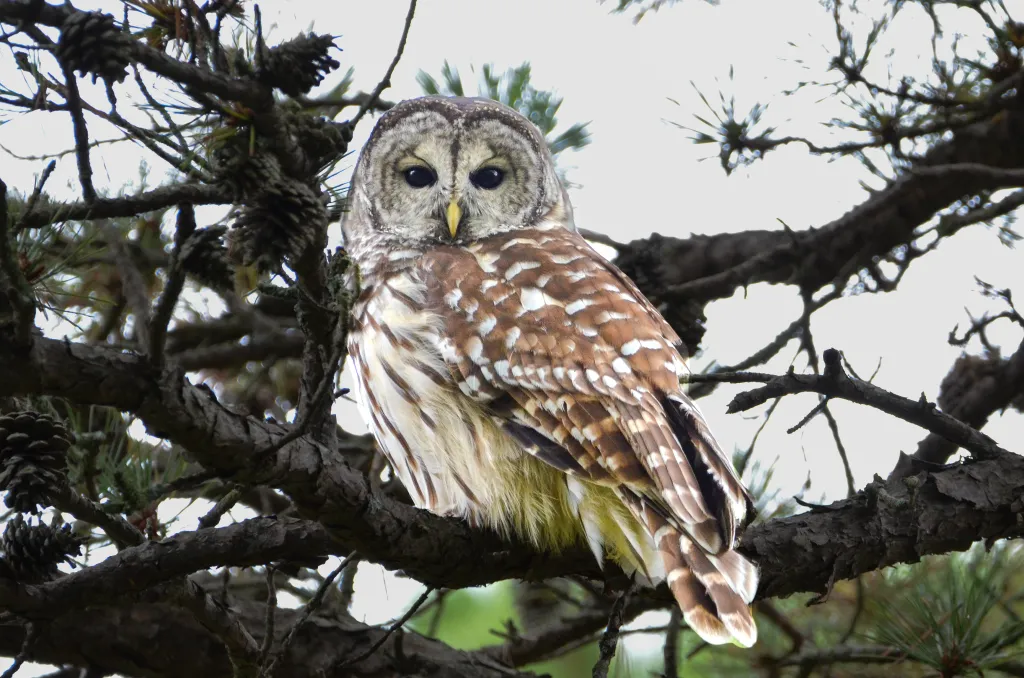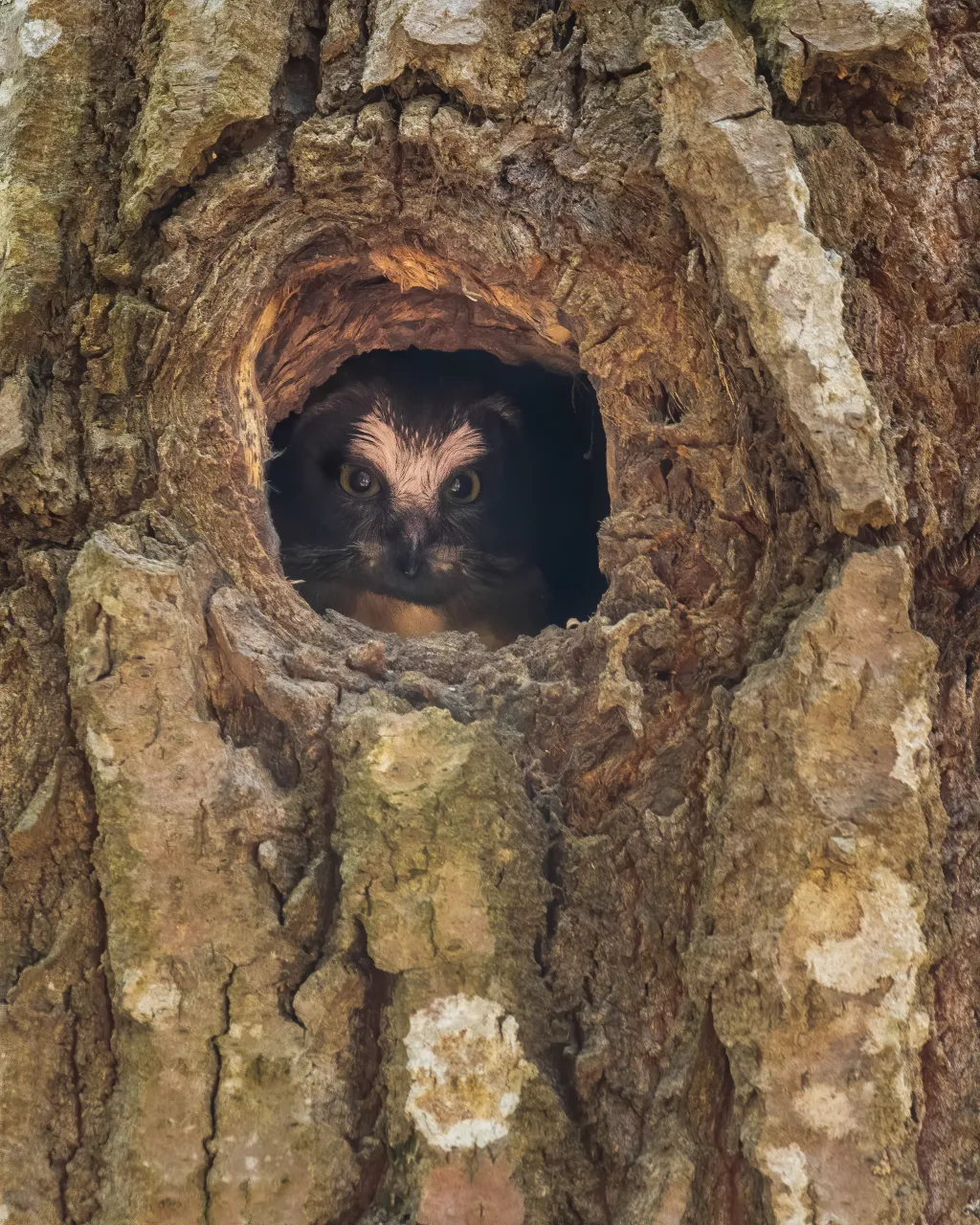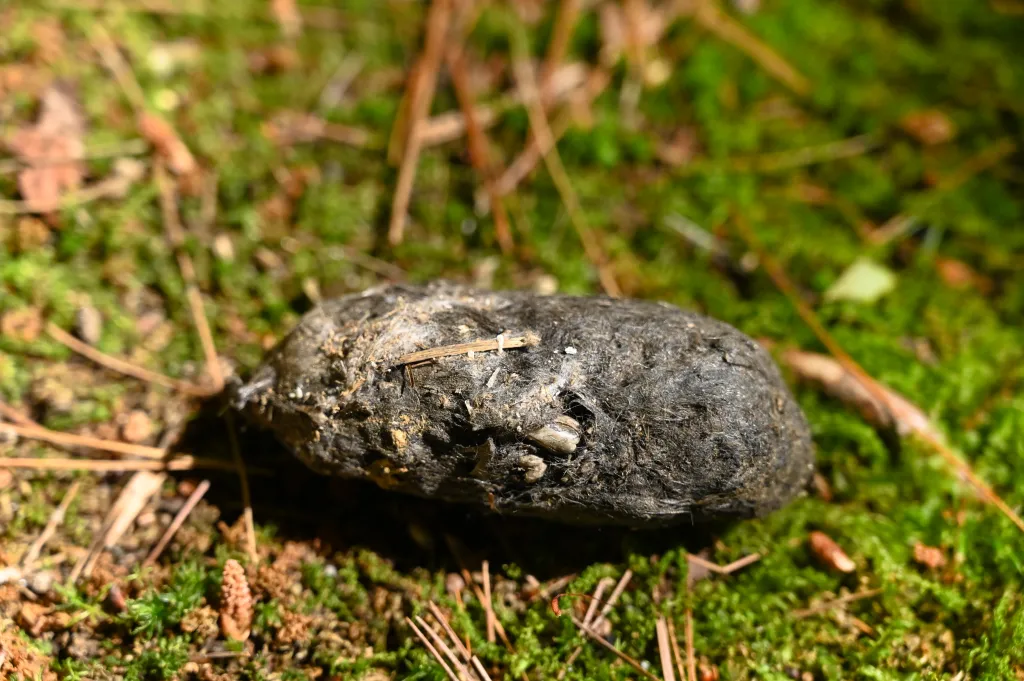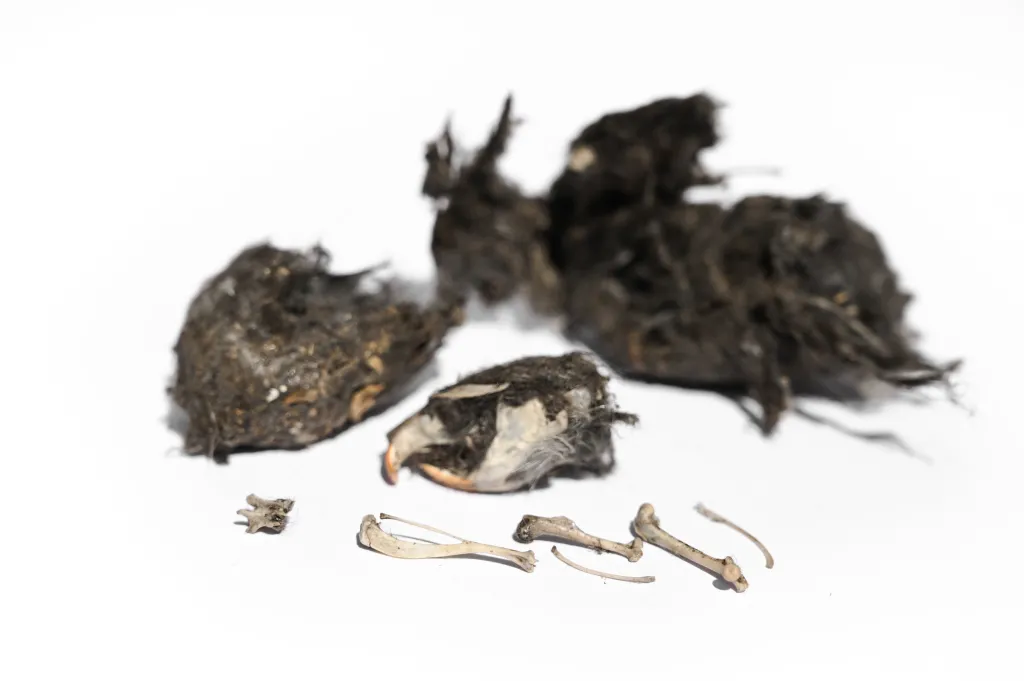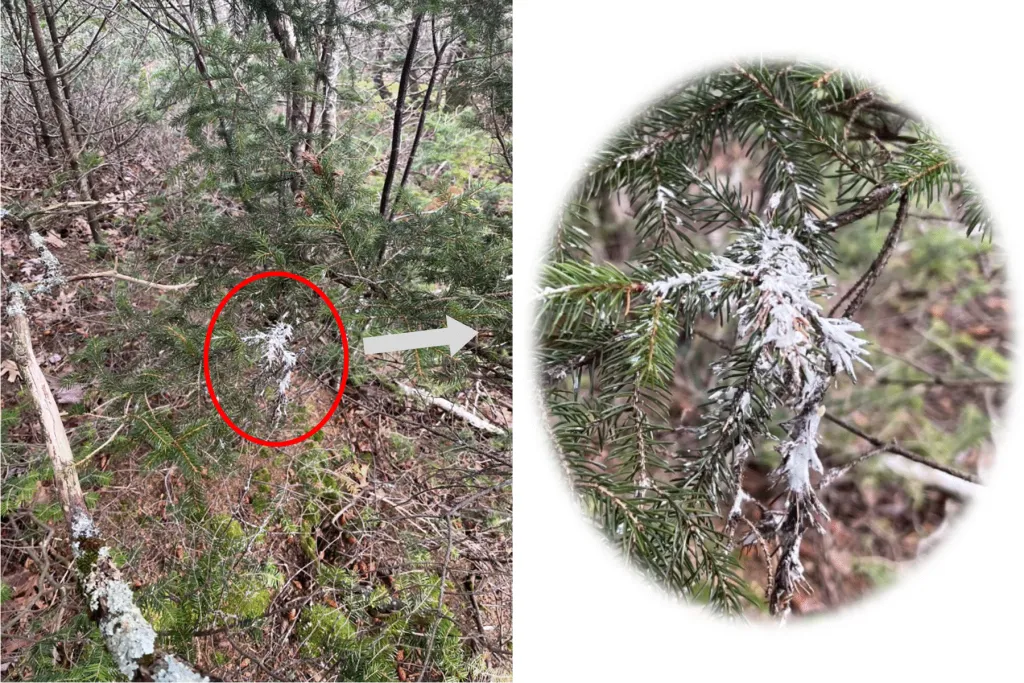UNE partners with state, federal agencies for citizen science project studying owl pellets
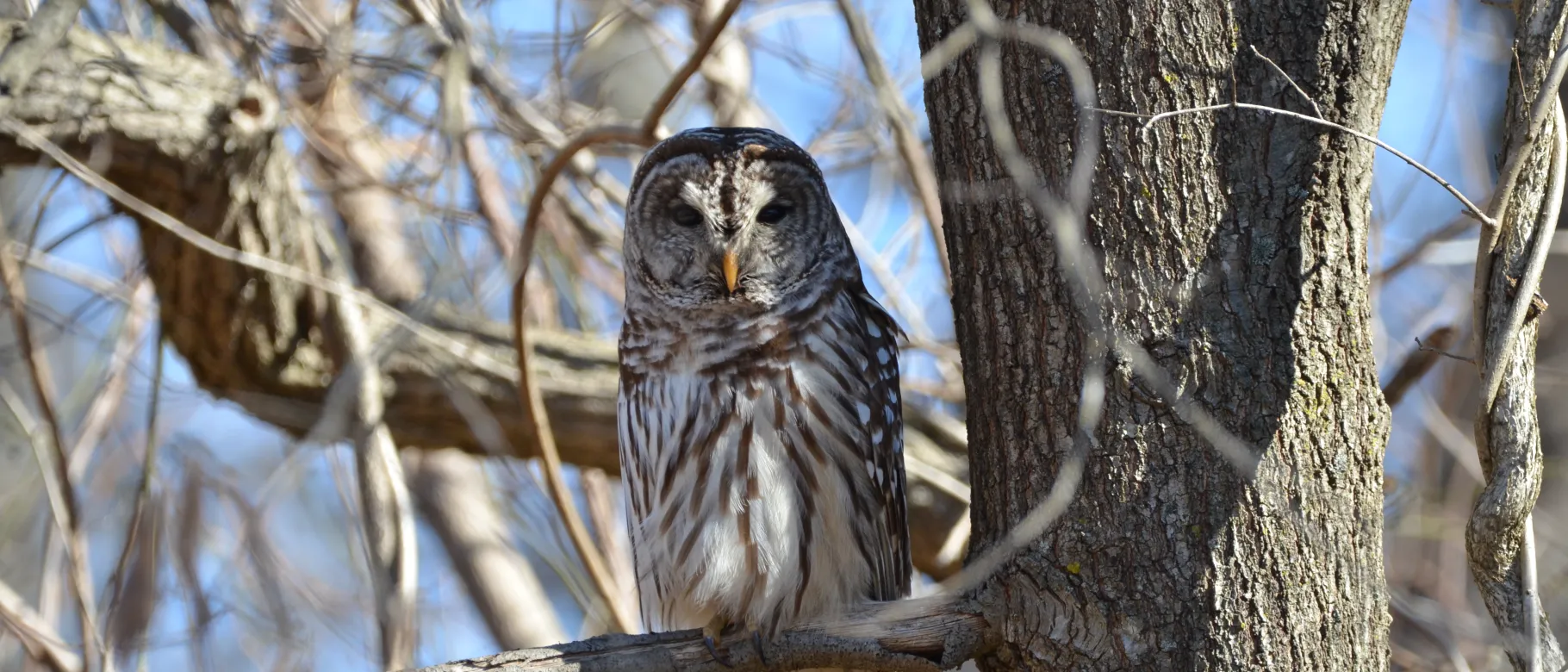
Watch where you step — someone may want what you’re about to squish.
That someone is Zachary Olson, Ph.D., associate professor of animal behavior within UNE’s School of Social and Behavioral Sciences, and he isn’t alone.
Olson, along with a team of scientists from U.S. Fish and Wildlife Service (USFWS) and Maine Department of Inland Fisheries and Wildlife (MDIFW), are spearheading the Maine Owl Pellet Project (MOPP), a citizen science initiative aimed at identifying the contents of owl pellets left on the state’s forest floors.
As carnivorous birds of prey, owls hunt a variety of animals, including small mammals, birds, amphibians, and invertebrates. They swallow their prey whole and later regurgitate indigestible materials such as bones and fur in the form of pellets.
Such pellets, which usually contain small mammal bones, provide a detailed record of what the owl has eaten and can give a snapshot into the animal community living near where the pellet was found.
And so, UNE, as well as federal and state wildlife biologists, want you to look for pellets and mail them in for genetic testing.
The aim of the project is to inform conservation efforts by better understanding the diet of Maine's owls and the distribution and composition of the small mammal community on which they prey. In particular, the researchers plan to focus their efforts on the elusive northern bog lemming, a state threatened species that has been petitioned for listing under the federal Endangered Species Act.
This northern bog lemming is prey to raptors, including owls, but that’s about all that’s known about the small rodent. Few people have actually seen a northern bog lemming, but owls probably have, and that’s where you come in.
The researchers are asking people across Maine to submit pellets for testing to the MOPP to help learn more about the species in and below the trees. Those who have hiked the state’s most mountainous regions or foraged its remote forests will have undoubtedly come across pellets and not even have known it, Olson said.
“Probably the most prominent sign that you are near an owl pellet is what the birding community calls ‘whitewash,’” Olson stated.
Olson explained that, over time, as owls roost in trees, their excrement can leave white streaks on the tree or nearby vegetation. “This whitewash can be a visual cue that you’ve found an owl roost, and finding a roost narrows your search and increases your chances of spotting owl pellets,” he said.
He instructs people to then keep their eyes on the forest floor for pellets 1 to 3 inches long, oblong in shape, that look like hair and bones were pressed together. “Any pellet you find would be a huge help to the project,” he remarked.
Those wanting to assist with the project — made possible with funding from the Maine Outdoor Heritage Fund — can safely collect pellets in plastic, zip-top bags and mail them to Olson using the instructions on the MOPP website.
Submitted pellets will be analyzed using DNA metabarcoding and morphological identification techniques to determine which species of owl produced the pellet and the species of the prey whose remains are contained within.
In addition to supporting the project, the scientists are also hoping that engaging the public will raise awareness about the importance of understanding ecology and conservation efforts, starting with owls and their prey, across the state.
"One of the most exciting parts of community science is the opportunity to work alongside the public, drawing on local knowledge and experience to advance conservation," said Mael Glon, Ph.D., an endangered species biologist with USFWS and the agency's lead for the northern bog lemming.
Owl pellets can be tricky to find, but the researchers said participants’ efforts will be valuable in contributing to new scientific research. Plus, they will see the fruits of their labor on the project’s website, where the project team will provide frequent updates so that the public can share in the excitement and discovery.
“The Maine Owl Pellet Project is an incredible opportunity to step into the wild and unravel some of its mysteries,” remarked Erynn Call, Ph.D., state raptor specialist with the MDIFW. “Anyone who ventures out in the woods is invited to participate and help us learn more about the diet of Maine’s owls and the state-threatened northern bog lemming, an incredibly rare and elusive species. As an MDIFW biologist, I’m excited to partner with USFWS and the University of New England on this new community science effort.”
Photos courtesy of Zach Olson and scientists from the Maine Department of Inland Fisheries and Wildlife and U.S. Fish and Wildlife Service.
